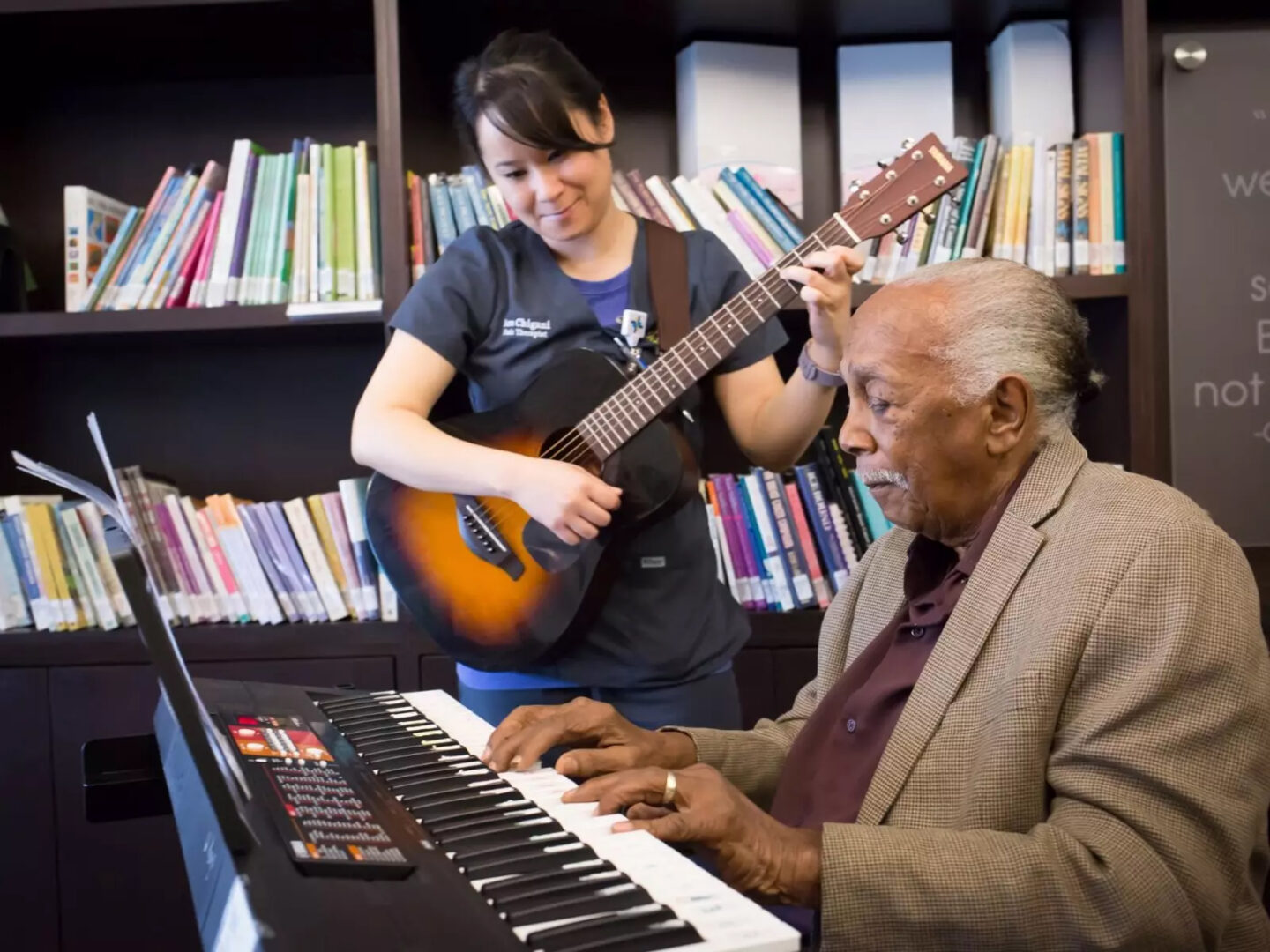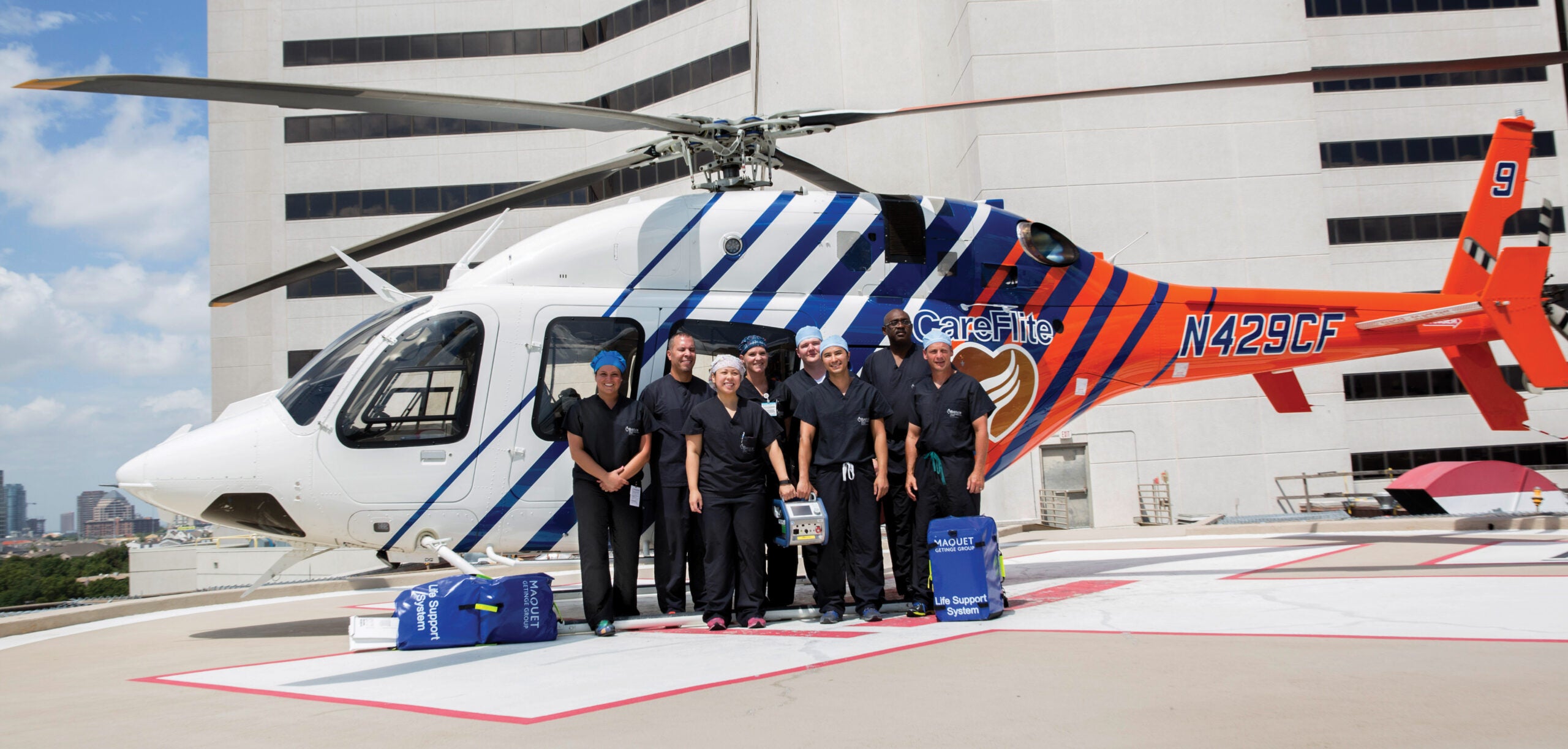As the sun rose one Friday morning this spring, 65-
year-old David Blevins was getting dressed and looking forward to a day of crappie fishing with his brother. Unfortunately, his heart had other plans.
He felt sharp pains in his chest back, got sick to his stomach and broke out in a cold sweat. He woke up his wife and told her to call 911. David knew better than to ignore these symptoms. Paramedics arrived at his home in Scurry, Kaufman County, and quickly determined that he was having a heart attack. They activated a helicopter to get him to an emergency heart center as fast as possible. During his flight to Baylor Scott & White Heart and Vascular Hospital — Dallas, paramedics had to shock his heart twice to stabilize his heart rhythm.
Once the team landed, David was rushed straight into the cardiac catheterization lab, where an interventional cardiologist, a team of nurses and other clinical caregivers were waiting for him.
“I had one guy working on each arm. Both got an IV in really fast,” David said. “They were very efficient.” David required four more shocks from the defibrillator while in the cath lab. The cardiologist placed two stents into the main artery supplying blood to David’s heart, and saved his life. David was discharged on Tuesday and back singing at the Scurry Church of Christ service on Wednesday.
As one of the busiest healthcare systems in Texas, Baylor Scott & White Health cares for hundreds of heart attack patients like David every year. The emergency cardiac team at each BSWH facility is on call 24 hours a day, 365 days a year. To support quality outcomes for patients at BSWH facilities, clinicians rely on meaningful data. Events like David’s healthcare journey are routinely recorded and entered into the electronic procedure record. Data points from health events like David’s are entered into national registries where clinicians can benchmark collated data to national registry performance.
“These registries provide comprehensive and detailed reports, but can be cumbersome to sift through and interpret,” said Eleanor “Ellie” Huff, RN, MSN, director of cardiovascular services for BSWH. “Our teams need accurate, timely data to maintain a continuous process improvement program.” Baylor Scott & White Dallas Foundation provided a $1 million gift to create an IT
infrastructure that helps our leaders collate large amounts of data efficiently and target improvement efforts. The vision is to empower a sophisticated way to look for correlations to improve outcomes and reduce unnecessary cost. The project was successfully led by Nancy Vish, RN, PhD, vice president of Baylor Scott & White Heart and Vascular — Dallas, and Kevin Wheelan, MD, chief medical officer at Baylor Scott & White Heart and Vascular — Dallas. The cardiovascular data
warehouse initiative (IDW) has been praised as a model for other service lines to follow in the BSWH system.
“We’re working with our physician leaders to identify key metrics, in one or two pages, which can be used as actionable results to improve patient care,” Ellie said. An example of one key metric in
the IDW is the Door to Balloon (DTB) time, or how fast a hospital gets the heart blockage removed to restore blood flow. Because of the intense focus on reduction of DTB time and other clinical quality measures, Baylor Scott & White Heart and Vascular — Dallas was ready
for David, and for that he’s grateful.
For more information about Baylor Scott & White’s heart and vascular initiatives, contact Melissa Dalton at 214.820.2705 or Melissa.Dalton@BSWHealth.org.







